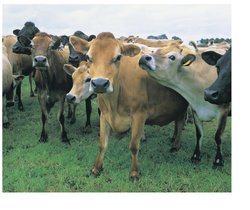
When you stop to think about it a cows liver is an amazing thing, and a huge asset for her.
An important function of this organ is to take short chain fatty acids from the rumen and transform them into glucose and energy.
Not only that, it has the ability to transform toxic ammonia from the rumen into urea, which is a lot safer for the cow.
So yes, we should protect cows livers. And these are just 5 ways.
- Look at your comparative stocking rate. Is it around 80 kg live weight per tonne Dry Matter available for the year? This would equate to a 560 kg Friesian cow being offered at least 7 tonne D.M. feed [either grown or bought in].
- Are they getting fed at least 3.5% of their live weight in this second half of lactation.So for our 560 kg cow this would equate to 19.6 kg D.M per day.
- Supplement their diet with an optimum level of vitamins and trace elements like Vitamin E, selenium, zinc and copper. These are vital for a healthy immune system.
- Prevent acidosis from occurring. Ensure that all cows, and not just the dominant ones, get their fair share of any fast,fermentable,starch and sugar feeds. You could supply physically effective fibre to encourage chewing and therefore saliva production.This will increase the PH of the rumen fluid and help to prevent inflammation.Bacteria and fungi can easily penetrate the stomach lining of the rumen if it gets inflamed and travel directly to the liver to cause abcesses.
- Finally fight off mycotoxin damage like that caused by the facial eczema fungus spore. This may entail fungicide spraying and/or dosing cows with zinc salts.
These are just five things you can do to keep your cows livers healthy and in tip top shape. This will result in better food conversion, optimum weight gain in late lactation and a long productive lactation.
If you’re feeding a lot of palm kernel extract because of the hot dry summer be aware that they may not need any extra copper. P.K.E contains between 20 and 25 mg/kg D.M of copper and most of that is available to the cow.
check this article out by Fraser Allan from Gribbles Animal Health Laboratory. It shows how liver copper levels have been rising over the last 10 years.